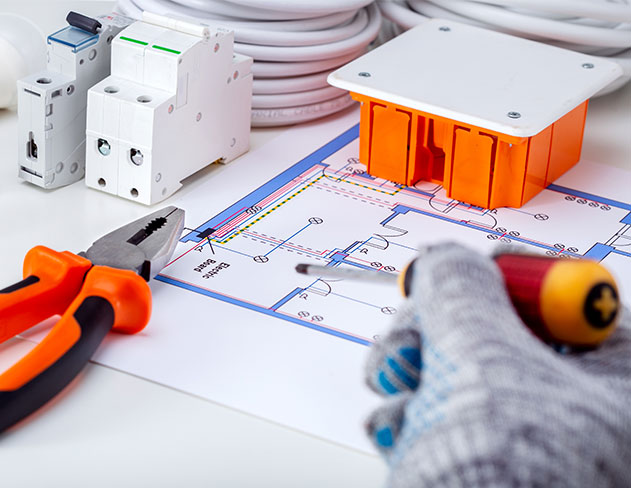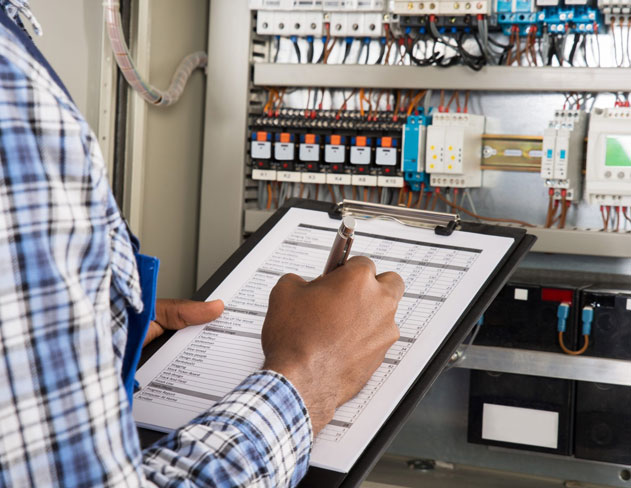At Hexo Electrical Testing, we enable clients to optimise sustainability performance through rigorous evaluation capabilities quantifying system efficiency. Our testing technologies benchmark asset health over lifetimes, helping organisations maximise value responsibly. As pioneers in electrical verification across industries, we empower societies to reach emissions reduction goals securely.
Electrical testing plays a crucial role in optimising energy efficiency, reducing waste, and minimising environmental impacts across industries. By assessing system performance, we can target issues driving resource consumption and emissions early. As global scrutiny on sustainability metrics rises, testing practices enable accountability, compliance, and improvement.
We will explore how testing technologies support environmental stewardship through energy savings and safety assurance. Evaluating factors like utilisation patterns and failure rates informs impact reduction opportunities. With climate goals accelerating the green transition, testing capabilities provide viability both today and tomorrow.
Definition of Electrical Testing
Electrical testing examines component and system parameters like voltage, current, and resistance to evaluate functionality. It verifies electric circuits operate within specified tolerances safely after manufacture, installation, or repair. Rigorously stress testing devices at scale under diverse operating conditions ensures reliability.
When deviations occur, testing determines failure precursors probing root causes. Continuous monitoring enables predictive maintenance so problems can be addressed strategically before causing operational disruptions. By confirming standards alignment, it safeguards quality for consumers while minimising risks for manufacturers.
Importance of Electrical Testing for Safety and Functionality
Meticulous electrical testing prevents potential safety hazards and performance issues from reaching customers. Medical devices undergo extensive validation so patients avoid harm from flaws escaping detection. Aviation systems feature redundancy and backup power supplies in case primary infrastructure unexpectedly fails mid-flight.
Across infrastructure assets like substations, real-time thermal monitoring of transformers prevents overheating and potential fires. Regular testing procedures assess deterioration indicators over decades-long lifecycles. For electric vehicles, responsibly designed battery validation averts catastrophic battery pack failures.
Environmental Impact
Measuring energy usage accurately is fundamental for targeting efficient interventions. Testing solar panels during production using thermal imaging cameras reveals microscopic cell defects reducing power outputs if unaddressed. Evaluating commercial building consumption hourly highlights opportunities shifting high-demand activities minimising peak electrical loads.
Electrical testing also prevents environmental hazards directly. Ground fault circuit interrupters shut off circuits promptly upon detecting abnormal current flows to reduce electric shock risks. Testing backup generators in water utilities ensures continuous pumping if external power supplies become disrupted, avoiding sewage overflows. Next we detail sustainability standards.
Compliance With Safety Standards
Various sustainability-linked safety standards now necessitate rigorous electrical testing. In the UK, BREEAM is the leading method for assessing the sustainability of buildings and infrastructure projects. Alongside this, UK-specific standards under the post-Brexit adaptation of the EU Ecodesign Directive play a crucial role in ensuring environmental compatibility and energy efficiency in various sectors. These frameworks collectively contribute to the UK’s broader environmental goals and sustainability agenda.
For emission-regulated engines, consistently passing test cycles before market release requires durability validation across thousands of hours. VEHICLE-TO-GRID (V2G) capabilities enabling electric vehicles to exchange charge with grids demands evaluating battery pack cycling resilience and stability intricately. Such testing capabilities uphold promises of sustainability.
Energy Efficiency
In the UK, the Climate Change Act establishes ambitious targets for reducing carbon emissions, shaping the way electric utilities operate. Efforts to enhance energy efficiency are paramount, with many companies adopting innovative practices to align with these national goals. This shift towards more sustainable energy practices not only supports the UK’s environmental objectives but also represents a significant step forward in responsible energy management.
Managing dynamic loads and distributed energy generation requires smarter grid investments. Testing technologies like REACT real-time appliance load monitoring furnishes behind-the-metre insights remotely helping consumers save over 20% in bills through informed usage.
Renewable Energy
Integrating solar, wind and other renewables into grids requires adjusting protection and control equipment dynamically since generation fluctuates with weather. To prevent destabilisation, testing systems like RTDS simulate renewable profile impacts facilitating smooth sector coupling.
The UK’s energy landscape is increasingly defined by its commitment to renewable sources, particularly offshore wind farms and solar energy. The Offshore Wind Sector Deal, for instance, aims to supply a third of the country’s electricity from offshore wind by 2030, demonstrating the UK’s dedication to sustainable energy solutions. This transition is crucial for the UK to meet its renewable energy targets and reduce its carbon footprint..
While enabling clean electricity, renewables introduce reliability testing challenges through inherent intermittency. High-performance testing procedures provide confidence in consistency.
Failures and Environmental Consequences
When electrical deficiencies evade preventative testing, substantial collateral damage can manifest environmentally. UK utilities, such as Thames Water, are actively working to reduce leakage rates across their networks. These efforts are in response to the UK government’s stringent targets and reflect a broader commitment to efficient water management and environmental stewardship. Reducing leakage is not just about conserving water; it’s also a crucial part of the UK’s strategy to manage resources more sustainably.
Measurement Techniques for Minimisation
Mitigating environmental risks requires tracking through responsible measurement techniques. Testing power plant emission analysers consistently ensures accurate pollution accounting. Structural vibration monitoring of bridges detects developing cracks early to prevent collapse. Grid sensor systems characterise normal electrical equipment hotspot behaviours to identify abnormalities flagging early degradation.
UK-based companies are increasingly focusing on aligning with environmental policies like the SECR framework and the CRC Energy Efficiency Scheme. These measures reflect a growing commitment to sustainable practices and carbon footprint reduction, with companies actively pursuing strategies to enhance environmental responsibility and reporting transparency.
Safety Protocols for Flammable Materials
When handling flammable materials in electrical testing, safety is paramount. Strict precautions include using non-sparking tools, avoiding proximity to ignition sources, establishing adequate ventilation, wearing protective equipment, restricting access during hazardous processes and having suppression systems nearby. Staff undergo extensive training so risks remain diligently managed.
Such discipline protects the public, environment and infrastructure from preventable harm. Still greater potential exists, decreasing footprints further through innovation.
Electrical Systems Protecting Our Environment
Beyond enabling sustainable performance validation, increasingly efficient electrical systems also conserve resources directly over lifecycles. LED lighting can reduce your carbon dioxide emission by up to 50kg a year. Electric heat pump water heating achieves 300% greater efficiency than traditional units by transferring ambient thermal energy.
Transitioning towards electrified, optimised systems powered by renewables orchestrated through intelligent networks is our path to carbon neutrality. The testing technologies explored in this article will facilitate that vital shift securely. Our environmental stability depends on these efforts.
Circular Lifecycle Design
Circular economy concepts promoting reuse and recycling provide templates for testing electrical equipment evolution. Rather than disposable single-use plastics, durable modular designs allow replacing only worn components. Standardising connections via USB reduces wasted materials. Optimised packaging minimises shipping footprints.
Serviceability access simplifies maintenance procedures extending viability. Design for disassembly principles guide end-of-life component harvesting for repurposing rather than landfilling wherever possible. Considering sustainability from the onset ensures responsible outcomes.
Leakage Rate Reduction
A top priority for utilities involves minimising system leakage enabling more efficient electric and water delivery while preventing risks associated with escaping fluids. Annual testing procedures help characterise leakage accurately across ageing infrastructure. Repair crews then target replacements strategically based on highest defects.
Advanced sensing through digital twins also identifies developing pinhole leaks before catastrophic ruptures occur. This preventative approach balances cost, water conservation and reliability. Best practices include proactive overall assessments every five years using step voltage surveys and leakage current analysis.
Health and Safety Impacts
Patient risks multiply when medical equipment lacks sufficient performance validation. A study found over two-thirds of infusion pump failures resulted from electrical faults manifesting in incorrect dosing. Beyond medical contexts, accidental 240-volt contact during improper electrical work exposes technicians to potential electrocution.
Regular testing ensures people remain protected by identifying issues before harms arise. Technological capabilities allow us to pursue innovation fearlessly through risk mitigation. But shortcuts invite disaster, making comprehensive verification indispensable. Electronic devices that aren’t properly tested pose a significant risk, and they need to meet compliance with regulations, as this plays a vital role in the law.
The Cost of Shortcuts
While full electrical testing cycles require considerable investments of time and resources, costs pale in comparison to rectifying problems after-the-fact. Having to tear down assembled equipment due to overlooked issues creates extensive rework and production bottlenecks. Expedited part orders inflate budgets. Site downtime during root cause investigations and repairs also generates revenue losses.
By confirming performance and safety beforehand, organisations avoid preventable setbacks down the line. In quality assurance, there are no shortcuts. Responsible testing promises savings overall. Our shared future depends on replicating such conscientious commitments at scale.
Why Partner with Hexo Electrical Testing for Your Sustainability Validation Needs
At Hexo Electrical Testing, we offer fully customised testing solutions tailored to your specific electrical testing goals. Our engineers diagnose underperformance risks through extensive assessments benchmarking assets against ratings. We identify efficiency barriers and safety hazards before they amplify into problems.
With rigorous measurement and analytics capabilities quantifying footprints from cradle to grave, we spotlight green optimisation pathways aligned to your priorities. Through years of regulatory testing compliance for product certification and market entry, we understand exactly how to demonstrate standards alignment credibly.
Whether targeting net zero ambitions or responsible stewardship, our partnerships build confidence through data-driven decarbonisation. Connect with our experts to get started.
FAQ
What is the environmental impact of electricity?
Electricity production contributes over 40% of global greenhouse gas emissions. Generating power via fossil fuels releases substantial carbon dioxide. Testing technologies that improve energy efficiency provide climate change mitigation.
What are the environmental hazards of electricity?
Electricity infrastructure near rivers and wildlife may leak oils contaminating waterways and habitats if equipment fails unexpectedly. Responsible electrical testing prevents such hazardous scenarios.
What is the environmental impact of power electronics?
Power electronic devices enabling electrification require rare Earth metals whose mining can generate radioactive waste threatening communities nearby. Safely reusing materials via recycling and refurbishment is crucial.
How has electrical engineering impacted the environment negatively?
Historically electrical engineering revolved around fossil fuel systems factors driving climate change. However, testing innovations now accelerate more sustainable technologies minimising ecological harms.

